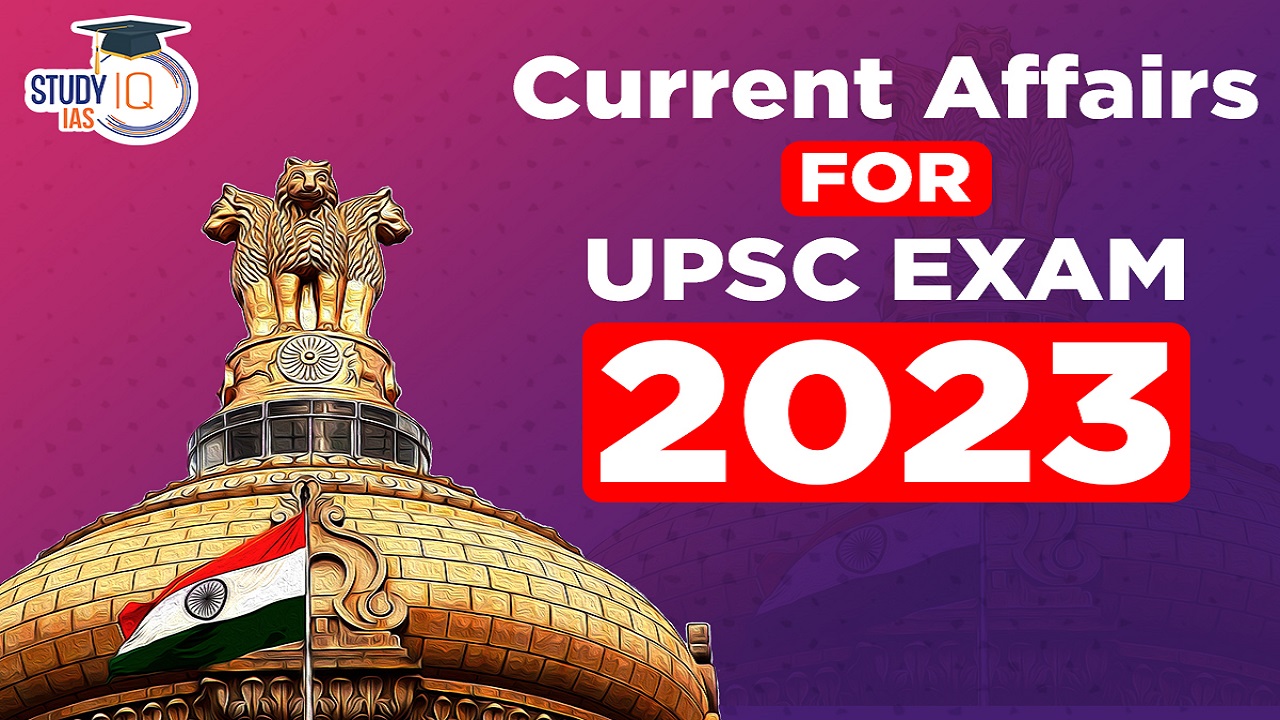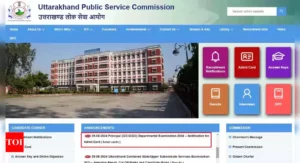Current Affairs 1st July 2023 for UPSC Prelims Exam
Global Forest Watch Report
Context: A study by the World Resources Institute’s (WRI) Global Forest Watch reveals that tropical areas experienced a significant decline in forest cover in 2022.
More on News
- Global Forest Watch (GFW) is an online platform that provides data and tools for monitoring forests.
- GFW is an initiative of the World Resources Institute, with partners including Google, USAID, the University of Maryland, Esri, Vizzuality and many other academic, non-profit, public, and private organizations.
- WRI measures progress on two goals that represent multiple global forest pledges:
- Ending deforestation by 2030 and
- Restoring 350 million hectares (Mha) of lost and degraded forests by 2030.
Key Findings of the Report
- Tropical Areas: Tropical areas lost 4.1 million hectares of forest cover in 2022.
- This forest loss produced 2.7 billion tonnes of carbon dioxide emissions, which is around the same as India’s annual emissions due to the combustion of fossil fuels.
- Primary Forest Cover: Primary forest cover loss in tropical areas in 2022 was 10% more than in 2021.
- Global Tree Cover Loss: The total global tree cover loss in 2022 declined by 10%.
- This includes primary, secondary, and planted forests.
- This decrease is a direct result of a decrease in fire-related forest losses which decreased 28% from 2021.
- Non-fire losses in 2022 increased by slightly less than 1%.
- Countries with high primary forest cover loss:
- Brazil and the Democratic Republic of Congo are the two countries with the most tropical forest cover, and both registered losses of this resource in 2022:
- Brazil: The rate of primary forest cover loss Brazil increased by 15% from 2021 to 2022.
- Non-fire-related losses in 2022 also reached the highest rate since 2005.
- Forest loss in the Amazon basin not only affects carbon but also regional rainfall.
- If deforestation continues at the current rate, it may eventually lead to a tipping point that, if crossed, could convert most of the ecosystem into a savanna.
- Democratic Republic of Congo: The Democratic Republic of Congo lost more than half a million hectares of primary forest cover in 2022.
- This rate of loss has continued to increase in recent years.
- As the population of the country grows, there is more demand for food, which in turn is leading to an expansion of area under agriculture and encroachment of land hosting primary forests.
- Primary forests are burned for short-term cultivation and then left fallow for regeneration of soil nutrients.
- However, increased demand for food has shortened the fallow periods, destroying more forests.
- Ghana and Bolivia: Ghana and Bolivia also rapidly lost their primary forest cover.
- India: It lost 43.9 thousand hectares of humid primary forest between 2021 and 2022, which accounts of 17% of the country’s total tree cover loss in the period.
- The total tree cover loss in India between 2021 and 2022 was 255 thousand hectares.
- Countries with low primary forest cover loss:
- Indonesia and Malaysia managed to keep their primary forest cover loss to record-low levels in 2022 alongside Costa Rica, China, Cote d’Ivoire, Vietnam, Gabon, Madagascar, Nicaragua, and Equatorial Guinea.
What are Primary Forests?
- Primary forests are mature, natural forests that have remained undisturbed in recent history.
- They often store more carbon than other forests and are rich sources of biodiversity.
- Primary forest loss is almost irreversible in nature: even if the green cover regrows, a secondary forest is unlikely to match the extent of biodiversity and carbon sequestering capabilities of a primary forest.
Key Solutions Mentioned in the Report
- The world needs to reduce global deforestation by at least 10% every year to meet the 2030 target.
- In 2022, although the global deforestation rate was 3.1% lower than the baseline from 2018-2020, it was still over one million hectares above the level needed. This puts the world off track to meet the 2030 goal.
- To meet the target of restoring 350 Mha of forests globally by 2030, the world needs to increase tree cover by 22 Mha per year, between 2021 and 2030.
- Despite registering some gains, the overall change in tree cover in the last 20 years was a net loss of 100 Mha.
- This means that we are still losing forests and not restoring them at the required rate.
Current Affairs 30th June 2023 for UPSC Prelims Exam
Labour Force Participation Rate (LFPR)
Context: The Centre for Monitoring Indian Economy (CMIE) has published the data India’s labour force participation rate (LFPR).
What is the Labour Force Participation Rate (LFPR)?
- The LFPR is the share of the working-age population (aged 15 years and above) that is employed or unemployed, willing and looking for employment.
- LFPR is calculated by dividing the total number of individuals in the labor force by the total working-age population and multiplying the result by 100 to express it as a percentage.
- It is an important indicator of economic activity and labor market dynamics.
- A high LFPR generally indicates a larger proportion of the working-age population being actively engaged in the labor force, which can contribute to economic growth and development.
- On the other hand, a low LFPR may suggest a higher proportion of individuals being inactive or outside the labor force, which can have negative implications for economy.
Key highlights of the data by CMIE
- India’s labour force participation rate (LFPR) stood at 39.5% in the last financial year (2022-23). This is the lowest LFPR reading since 2016-17.
- The LFPR for men stood at a seven-year low of 66% while that of women was pegged at a mere 8.8%.
- Consistent Decline:
- The LFPR has been falling in a consistent manner since 2016-17 and has hit its lowest in 2022-23.
- It is noteworthy that the fall has happened despite the fast growth rate of the economy. For instance, the GDP grew by 7.2% in 2022-23.
- The bulk of the decline happened before the Covid pandemic. This was the time when the economy was decelerating sharply. The GDP in 2019-20 grew by less than 4%.
- India’s female LFPR has fallen to just 8.8% in FY23. In other words, more than 90% of all working-age women in India don’t even look for a job.
- Global laggard:
- According to CMIE, India’s LPR is woefully low when compared to some Latin American and Asian economies that boast far higher labour participation rates.
- In Indonesia, for instance, around 67 per cent of the working-age population entered the labour force in 2022 in search of employment.
- In countries like South Korea and Brazil, the labour participation rates were as high as 63-64 per cent.
- Argentina, Bangladesh and the Philippines recorded LPRs in the 58-60 per cent range.
- However, CMIE admits that its measure of assessing LFPR are more stringent than others. For instance, the International Labour Organization (ILO) pegged India’s LFPR at 49% for 2022 — distinctly higher than CMIE’s 40% for 2022.

About the Centre for Monitoring Indian Economy (CMIE)
- CMIE is a leading business information company. It was established in 1976, primarily as an independent think tank.
- CMIE produces economic and business databases and develops specialised analytical tools to deliver these to its customers for decision making and for research. It analyses the data to decipher trends in the economy.
GST Appellate Tribunal (GSTAT)
Context: GST Appellate Tribunal will be the first joint forum where the dispute resolution process will converge for all GST laws and both Central and state tax administration.
Background
- GST Council, in its 47th meeting decided to set up a Group of Ministers (GoM) to recommend necessary amendments in GST laws to maintain the right federal balance and in line with court verdicts.
About GST Appellate Tribunal
- Definition: GSTAT will be the first joint forum at which the dispute resolution process will converge for all GST laws and both tax administrations, that is, Central and state tax.
- The Centre and states shall have equal representation.
- Need:
- Interpretational Challenges: Since the introduction of GST in July 2017, GST law has been subjected to divergent interpretations by the taxpayers as well as the authorities.
- It led to numerous disputes mainly in the context of the levy, valuation, classification, creditability (including transitional credits), and refunds.
- Lack of Specialized Benches: In the absence of GST Appellate Tribunals, taxpayers have often been invoking writ jurisdiction to seek relief from High Courts.
- Without an ultimate fact-finding authority in the form of GSTAT in place, knocking on the doors of High Courts is not viable.
- Also, these High Courts may not have specialized Benches to deal with GST matters, or simply cannot accommodate the matters on the Board expeditiously, due to the pending backlog.
- Judicial Pendency: Given the pendency of matters, the constitution of the GST Appellate Tribunal (GSTAT) has been much awaited in recent years for judicious disposal of cases.
- Difficulties Faced by Aggrieved Taxpayers: In the absence of Tribunal, the aggrieved taxpayer has no option but to wait for justice, while the revenue authorities press aggressively for implementation of their own orders.
- Interpretational Challenges: Since the introduction of GST in July 2017, GST law has been subjected to divergent interpretations by the taxpayers as well as the authorities.
- Tentative Composition:
- Benches: The GST Tribunal will have one principal bench in New Delhi and as many benches or boards in States as decided by each State, subject to approval of the Council.
- Members: As per the original provisions under Section 109 of the CGST Act, the national bench and each regional bench of the tribunal would consist of one judicial member, one technical member (Centre) and one technical member (State).
- Search-cum-Selection Committee: Section 110 (4)(a) and (b) of the Act provide for the Search-cum-Selection Committee for technical member (State) of a State Bench.
- Such a committee will be headed by the Chief Justice of the high court in the case of technical member (State) and the CJI for all other cases. This will ensure transparency in the selection process.
- Tenure: The CGST Act provides for a member’s tenure to last four years with a provision of a two-year extension.
- This accounts for sufficient time for members to perform their duties and to ensure the availability of suitable replacements.
- Observations by Madras High Court:
- The Madras High Court, in Revenue Bar Association v Union of India, struck down the relevant provision of the CGST Act on the grounds that the number of technical members can’t exceed the number of judicial members.
- The Madras High Court rejected the provisions under Sections 109 and 110 of the CGST Act observing that it was ultra-vires in so far as excluding lawyers from consideration as members of the Tribunals.
- The court held that because advocates are eligible in other tribunals, the GST law makes them ineligible for appointment since it would be in violation of Article 14.
- Besides, there are several existing tribunals in India where advocates are not eligible for the post of Judicial member.
- Problems in Constitution of GSTAT:
- The immediate challenge will be ensuring there is sufficient manpower to man these tribunals.
- The initial number of GSTAT benches is expected to be over 30.
- That means a total of 60 judicial members and 60 technical members.
- Search-cum-selection committees may struggle to identify the right persons to hold these positions.
- The Customs Excise and Service Tax Appellate Tribunal (CESTAT) will also need central and state officers in the same capacity to defend cases that come to it.
- Lasting and expansive infrastructure will be required to house these GSTAT benches.
- The immediate challenge will be ensuring there is sufficient manpower to man these tribunals.
The India-U.S. Deal for MQ-9B Drones
Context: India will start the formal acquisition process for the 31 weaponized MQ-9B Reaper drones, also known as Predator-B drones from the US in July,2023.
About MQ-9B Reaper drone
- The MQ-9B Reaper drones are high-altitude long-endurance drones (or Unmanned Aerial vehicles) having strike missiles that can eliminate enemy targets with absolute accuracy.
- It is developed by General Atomics Aeronautical Systems (GA-ASI) primarily for the United States Air Force (USAF).
- Variants: The MQ-9B has two variants — SkyGuardian and its sibling SeaGuardian.
- The India-U.S. deal for 31 MQ-9B Reaper drones include 15 SeaGuardians for the Indian Navy and 16 SkyGuardians — eight each for the Indian Army and Air Force.
- The Indian Navy has been operating the MQ-9B Sea Guardian since 2020.
- Features:
- It can operate at over 40,000 feet.
- It also has a maximum endurance of 40 hours, making it useful for long-hour surveillance.
- It can support land, maritime surveillance, anti-submarine warfare, anti-surface warfare, strike, electronic warfare and expeditionary roles.
- It is equipped with advanced features such as automatic take-off and landing, detect and avoid system, anti-spoofing GPS, and encrypted communication links.
- The drones are equipped with air-to-ground missiles and smart bombs for long-range precision strikes.

Significance of MQ-9B Reaper drones for India
- Cost-effectiveness: The MQ-9B Reaper drones provide approximately 80% of the capabilities of large human-flown maritime patrol aircraft at only around 20% of the cost per hour. This makes them a much more economical option for navies.
- Enhanced Surveillance: The drones enable round-the-clock surveillance capabilities, extending the reach of India’s Army and Air Force beyond borders. They can provide valuable intelligence on activities such as Chinese military buildup and troop movements along the Line of Actual Control (LAC) and even deep inside enemy territory.
- Integration with Existing Platforms: The MQ-9B Reaper seamlessly integrates with other U.S.-origin platforms that India already operates, such as the P-8Is, AH-64 Apache attack helicopters, and MH-60R multi-role helicopters.
Horizontal and Vertical Reservations
Context: Trans persons in India have been fighting for the right to horizontal reservation for a long time.
More on the News
- National Legal Services Authority of India (NALSA) v Union of India (2014): The Supreme Court ruled that transgender persons have a right to reservation, owing to the fact that they are a “socially and educationally backward class”.
- Also, the court directed the central and state governments to extend all kinds of reservation in cases of admission in educational institutions and for public appointments.
- However, the NALSA judgment did not specify the nature of reservations, whether they should be vertical or horizontal.
- Since the NALSA judgment, there has been no direction from the Central government on delivering on the right to reservation for trans persons.
- In 2018, a parliamentary standing committee under the Ministry of Social Justice was set up.
- The committee, again in line with the NALSA judgment, recommended reservations for transgender persons.
- Yet, the Transgender Persons (Protection of Rights) Act, 2019 did not have any mention of reservation — vertical or horizontal.
What is Vertical Reservation?
- Vertical reservations are provisions aimed at addressing social asymmetry arising out of caste hierarchy, and in the case of OBCs, social and educational “backwardness”.
- These include reservations for Scheduled Castes (SC), Scheduled Tribes (ST) and Other Backward Classes (OBC).
- Article 16(4) of the Constitution contemplates vertical reservation.
- Article 16 (4) provides that the State can enact legislation for the reservation of posts in the government sector or jobs in favour of the backward classes of citizens, which the State considers having not been adequately represented in the services of the State.
- Accordingly, the government of India has been implementing 60% vertical reservation i.e., about 60% of seats are reserved in India – for various sections like ST, SC, OBC, and EWS – with respect to Government jobs and Higher Education Institutions.
What is Horizontal Reservation?
- Horizontal reservation, on the other hand, cuts across all vertical groups to provide affirmative policies for disadvantaged groups within categories.
- The horizontal quota is applied separately to each vertical category, and not across the board.
- For example, disabled persons are guaranteed horizontal reservation in all the aforementioned vertical categories, general and reserved (vertical) alike, by the Central government.
- States like Uttarakhand and Bihar have also rolled out policies that guarantee horizontal reservation for women. This means that a woman who belongs to the SC category should be able to avail reservation based on both caste and gender. The horizontal model ensures this.
- Article 15 (3) of the Constitution contemplates horizontal reservation.
- Article 15(3) states that the state can make special precautions to protect women and children. Gender equality should be promoted by providing free education to children or reserving seats in municipal councils for women.


 IB ACIO Salary 2025, In-Hand Salary, All...
IB ACIO Salary 2025, In-Hand Salary, All...
 UKPSC Lower PCS Recruitment 2024: Exam D...
UKPSC Lower PCS Recruitment 2024: Exam D...
 India’s First Full-Stack Quantum Compu...
India’s First Full-Stack Quantum Compu...





















